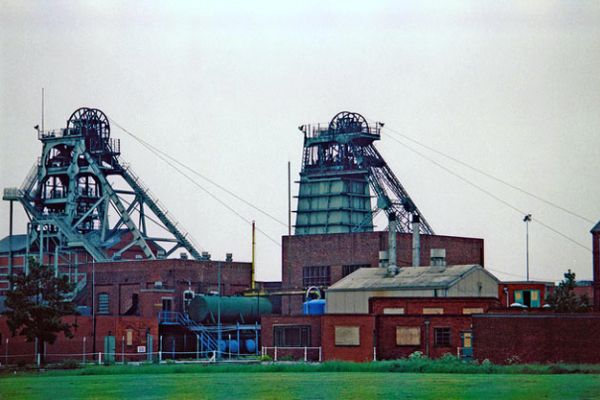
Creswell Colliery
Copyright © Darren Haywood and licensed for reuse under this Creative Commons Licence
In 1889 Emerson Muschamp Bainbridge formed the Bolsover Colliery Co. Ltd and secured a lease on land at Creswell from the Duke of Portland.
Leases were also secured to mine coal at Bolsover (1891), Mansfield (1905), Rufford (1913), Clipstone (1922) and Thoresby (1928)
By 1933 the company’s mines employed over 9,000 men extracting 4.5 million tons of coal from the Top Hard, Waterloo and High Hazel seams.
The company started shaft sinking at Cresswell in 1894; 2 shafts were sunk, each 18 feet (5.5m) diameter. The High Hazel seam was reached at 329 yards (300m) and the shaft continued down to the Top Hard Seam at 440 yards (402m). Coal production commenced in 1897.
Over the years the output from the High Hazel was gradually increased and that of the Top Hard declined. Work ceased in the Top Hard in 1941 and after that all the output came from the Top Hazel.
The High Hazel had an average inclination of 1 in 30 and was about 4 feet 6 inches thick. By 1950, it was worked by an advancing longwall face in three main districts which were known as the North-West, South-East and South-West Districts. There were 1,144 men employed underground and 355 on the surface. The weekly output of the colliery in 1950 was just over 14,000 tons. The coal from all three districts was transported to the pit bottom by trunk-belt conveyors and wound at the downcast shaft. Coal filling and winding were done on the day and afternoon shifts.
In 1947 the National Coal Board took over all the company’s collieries and worked Cresswell until it closure in 1991.
On 26th September 1950 a disaster occurred when a conveyor fire caused the deaths of 82 men from Carbon Monoxide poisoning. The full report can be found here.
Return to previous page
